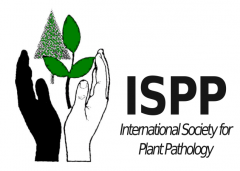FIRST REPORT OF BOTRYTIS ROT CAUSED BY BOTRYTIS CINEREA ON PEACH IN ECUADOR
L.K. Abata, A.R. Izquierdo, W. Viera, F.J. Flores
doi: 10.4454/jpp.v98i3.3766
Abstract:
Botrytis cinerea is a common plant pathogen that affects stone fruits, including peach (Prunus persica L.) which is cul- tivated on 6,884 ha with a production of 36,423 ton per year in Ecuador (FAOSTAT, 2016) In September 2015, brown spots were observed on peach fruits var. Diamante in the province of Pichincha, at an altitude of 2348 meters above sea level, 00° 13’ S latitude, and 78° 24’ W longitude. After three days of incubation in a moist chamber at 27 ± 2oC, gray mycelia were associated with the lesions. Aerial myce- lia were plated on PDA and axenic cultures were obtained by hyphal tipping. The isolates had septate hyphae and hya- line branched conidiophores with short clusters of several ovoid conidia formed at the apex. The internal transcribed spacer of isolate UFAH00010 (KX463512) was amplified us- ing primers ITS4-ITS5 (White et al., 1990) and produced a 547 bp fragment that was sequenced. The BLASTn search showed the sequence had 99% identity with sequence KF859918.1 from B. cinerea CBS 131.28. To test Koch’s postulates, 1 cm2 plugs taken from the edge of the actively growing B. cinerea isolate UFAH00010 were inoculated on the surface of two healthy peaches and placed in a moist chamber. Non-inoculated peaches were incubated under the same conditions and served as the control. Two days after inoculation, inoculated peaches had beige, circular, sunken lesions that expanded rapidly over the peach surface. Gray cottony-mycelium associated with the lesions was observed under the microscope and identified as B. cinerea. This is the first report of Botrytis rot caused by B. cinerea in peach orchards in Ecuador.




